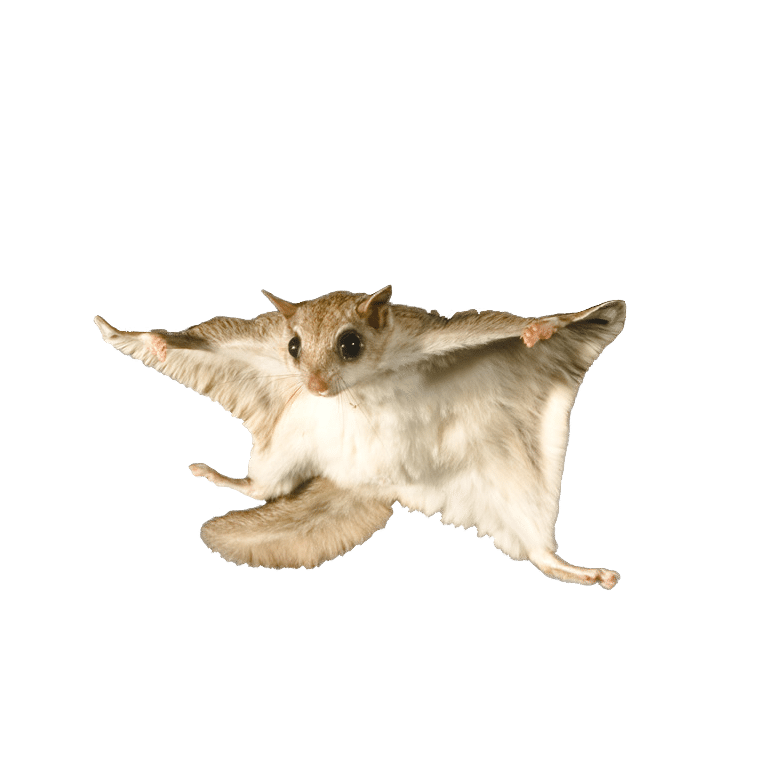Flying Squirrel
The flying squirrel is the smallest of all squirrels, weighing between 3-5 ounces with a body length of approximately 9-14 inches. Identified by their ability to glide (not actually fly), flying squirrels have a thin, furred membrane of skin that runs from their wrists to their ankles. Their fur varies in color from brown or grayish to reddish-brown or blackish-brown and their tale is broad, flattened and fluffy. Females and males are similar in appearance.
For more information on keeping your home free of squirrels, contact our Pest Professionals for a FREE quote today!
What is the Flying Squirrel Diet?
Flying squirrels primarily eat berries, blossoms, buds, cherries, and all types of nuts, except for walnuts, because the shells are too hard to gnaw. They especially like meat and also enjoy insects, bird eggs and small nestling birds.
What is the Flying Squirrel Reproductive Cycle?
Flying squirrels are communal, often living together. Their yearly mating season begins in February and ends in March. Forty days after mating, a litter of 3 to 6 young is born. At 8 weeks, a young flying squirrel will attempt its first glide and after 18 months, the squirrel is considered an adult. Their life span is about 5 to 6 years.
Where do Flying Squirrels Live?
Flying squirrels are generally found in tree cavities, though when nesting spots are scarce, leaf nests, an abandoned woodpecker nest or bird boxes may be used. Flying squirrels will make their way into homes, nesting in attics and closets.
Ready to Schedule a Service?

